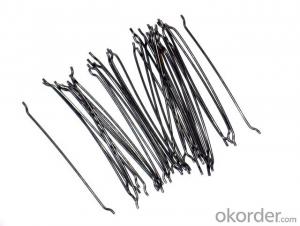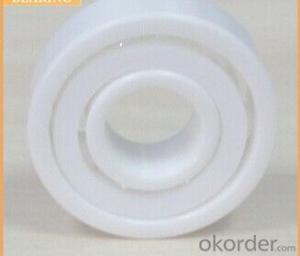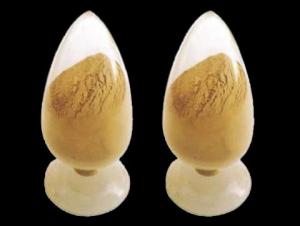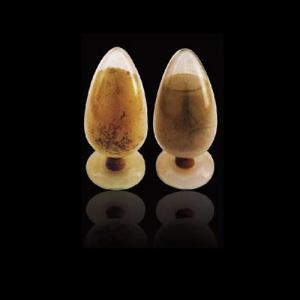Calcined Petroleum Coke Supply From Shanghai
- Loading Port:
- Shekou
- Payment Terms:
- TT OR LC
- Min Order Qty:
- 20 m.t
- Supply Capability:
- 1000 m.t/month
OKorder Service Pledge
OKorder Financial Service
You Might Also Like
Factory Background
The factory is majorly running and operating carbon additive (pitch coke, calcined petroleum coke and anthracite), low nitrogen carbon additive, and brake pad making material. Company is the long term supplier of Sinosteel Corporation, Shanghai Carbon Corporation, the plant of SGL Group the Carbon Company in China and some largest special carbon products producing plants.
YUAI also supplies huge amout of high quality carbon additive and graphite carbon additive to steel plants, foundries and ferrotungsten plants. YUAI has been assigned by BAO STEEL as the only organization for processing pitch coke for export purpose. The group’s major products are constantly exported to Japan, Korea, Malaysia, South East Asia countries, Europe and America, which receive praises by our consumers.
The group has invested numbers of calcinators in Anhui China to ensure the capability of producing and processing huge amount of carbon additive. Further investment is on process. According to the orders from customers, YUAI is able to processing and providing different specifications of carbon additive and other products. To provide best quality of products and to offer customers most satisfied service is YUAI’s operating objectives.
Calcined Petroleum Coke
FC:98.5%min,
S:0.5%max
A:0.8%max
V:0.7%max
Mositure:0.5%max
Size:1-5mm
This product is mainly used in steel-making and foundry. Calcined Petroleum Coke
Calcined Petroleum Coke comes from delayed coke which extracted from oil refinery. Although Calcined Petroleum Coke contains a little bit higher level of sulfur and nitrogen than pitch coke, the price advantage still makes it widely used during steel-making and founding as a kind of carbon additive/carburant.
Packaging & Delivery
Packaging Detail:25kg paper bag into 1t weaving bag 5kg, 10kg and 20kg weaving bag into 1t weaving bag 25kg weaving bag put on pallet covered with entanglement wrap product direct into packing bag 25kg paper bag put on pallet covered with entanglement Wrap 25kg weaving bag into 1t weaving bag.
Delivery Details: 7 days


- Q:Can monolithic refractories be used for lining iron and steel ladles during casting and pouring?
- Yes, monolithic refractories can be used for lining iron and steel ladles during casting and pouring. Monolithic refractories are versatile and can withstand high temperatures, making them suitable for such applications. They provide excellent thermal insulation and chemical resistance, ensuring the integrity of the ladle lining and preventing contamination of the molten metal during the casting process.
- Q:What are the latest advancements in monolithic refractories for the iron and steel industry?
- Some of the latest advancements in monolithic refractories for the iron and steel industry include the development of high-performance materials with enhanced thermal shock resistance, improved corrosion resistance, and increased durability. These advancements have been achieved through the incorporation of advanced additives and binders, as well as the utilization of new manufacturing techniques such as spray drying and rapid heat curing. Additionally, there have been advancements in the design of monolithic refractory shapes and installation techniques to optimize their performance and increase their lifespan in the demanding environments of the iron and steel industry.
- Q:What are the factors affecting the thermal expansion of monolithic refractories?
- The thermal expansion of monolithic refractories is influenced by several factors. These factors include the chemical composition of the refractory material, particle size, temperature, thermal history, porosity, binder content, and thermal shock. 1. The thermal expansion of the refractory material is significantly influenced by its chemical composition. Different chemical elements and compounds have varying coefficients of thermal expansion. For instance, materials with high levels of silica generally have lower coefficients of thermal expansion compared to those with higher concentrations of alumina. 2. The particle size distribution of the refractory material can also impact its thermal expansion. Smaller particle sizes result in higher thermal expansion due to increased surface area and greater particle contact. 3. The temperature at which the monolithic refractory is exposed plays a crucial role in its thermal expansion. As the temperature increases, the particles gain more kinetic energy, leading to increased movement and expansion. Different refractory materials exhibit significant expansion within specific temperature ranges. 4. The thermal history of the refractory material, including its heating and cooling cycles, can influence its thermal expansion behavior. Repeated heating and cooling cycles can induce microstructural changes in the material, affecting its thermal expansion properties. 5. The porosity of the monolithic refractory also affects its thermal expansion. Higher porosity generally results in higher thermal expansion due to the presence of voids and gaps within the material. 6. The type and amount of binder used in monolithic refractories impact their thermal expansion. Different binders have different coefficients of thermal expansion, which can influence the overall expansion behavior of the material. 7. Rapid temperature changes, such as quenching or exposure to alternating heating and cooling, can cause thermal shock in the refractory material. This can lead to cracks, spalling, and changes in thermal expansion behavior. Understanding these factors is essential when selecting the appropriate monolithic refractory material for specific applications. The thermal expansion characteristics directly affect the performance and longevity of the refractory in high-temperature environments.
- Q:How do monolithic refractories enhance the performance of ladle and tundish purging systems?
- The performance of ladle and tundish purging systems is greatly improved by the use of monolithic refractories. These refractories offer various advantages in enhancing the efficiency and effectiveness of the purging process. To begin with, the thermal insulation properties of monolithic refractories are exceptional. When impurities and gases need to be eliminated from molten metal, high temperatures are necessary. By utilizing monolithic refractories, heat loss is minimized, and the desired temperature within the system is maintained. This ensures that the purging process is carried out effectively and efficiently. Furthermore, monolithic refractories possess superior resistance to erosion and corrosion. The molten metal and purging gases can be corrosive and abrasive, making it essential for the lining to withstand such harsh conditions. Monolithic refractories are specifically designed to endure these circumstances, preventing erosion and corrosion. This contributes to the longevity of the ladle and tundish purging systems, reducing the need for frequent repairs or replacements. Additionally, monolithic refractories provide remarkable strength and stability. As molten metal and purging gases move within the system, significant mechanical stresses are experienced. The use of monolithic refractories ensures that the lining remains structurally sound, preventing any deformation or failure under these conditions. This guarantees smooth and uninterrupted purging operations, thus enhancing the overall performance of the system. Moreover, the installation and maintenance of monolithic refractories are straightforward. Unlike traditional brick and mortar refractories, monolithic refractories can be easily applied as a single, uniform layer. This simplifies the installation process and reduces the time and effort required for maintenance. Any necessary repairs or replacements can be conducted more efficiently, resulting in minimal downtime and maximum productivity for the ladle and tundish purging systems. In conclusion, monolithic refractories significantly improve the performance of ladle and tundish purging systems by providing excellent thermal insulation, erosion and corrosion resistance, strength and stability, as well as ease of installation and maintenance. These properties contribute to the efficient and effective removal of impurities and gases from molten metal, ensuring high-quality output and optimizing the overall productivity of the purging process.
- Q:What are the challenges faced in the application of monolithic refractories?
- The application of monolithic refractories presents several challenges. Firstly, a major hurdle is the correct installation of these refractories. Unlike traditional brick refractories that can be easily stacked, specialized skills and techniques are required for the proper application of monolithic refractories. The consistency and workability of the refractory material must be carefully controlled, and specialized equipment such as gunning machines or vibrating tools are often necessary for the installation process. Another challenge lies in selecting the appropriate monolithic refractory material for a specific application. There are various types of monolithic refractories available, each with its own unique properties and suitability for different environments. Choosing the wrong type of refractory material can lead to premature failure and expensive repairs. Therefore, it is crucial to understand the operating conditions, including temperature, chemical exposure, and mechanical stress, in order to select the most suitable monolithic refractory material. Additionally, monolithic refractories are prone to thermal shock and erosion due to their composition and method of application. They are typically made from fine powders that are mixed with water or other binding agents to form a paste. This paste is then applied and dried to create a solid refractory lining. However, during the heating and cooling cycles, monolithic refractories can experience thermal expansion and contraction, resulting in cracks and spalling. Furthermore, chemical reactions occurring in certain industrial processes can cause chemical attack and erosion of the refractory lining, reducing its lifespan. Furthermore, the maintenance and repair of monolithic refractories can also pose a challenge. Unlike brick refractories that can be easily replaced, repairing monolithic refractories often requires skilled personnel and specialized techniques. The damaged area must be removed, and a new layer of refractory material must be applied, ensuring proper bonding and compatibility with the existing lining. This process can be time-consuming and costly, especially in high-temperature applications where extended downtime can result in significant production losses. In conclusion, the application of monolithic refractories presents challenges in terms of proper installation techniques, material selection, susceptibility to thermal shock and erosion, and complex maintenance and repair procedures. Overcoming these challenges requires expertise, careful planning, and a comprehensive understanding of the specific operating conditions and requirements for each application.
- Q:How do monolithic refractories perform in reheating furnace applications?
- Due to their exceptional thermal stability, strength, and resistance to thermal shock, monolithic refractories are highly effective in reheating furnace applications. These refractories are specifically designed to withstand the harsh operating conditions commonly found in reheating furnaces, including high temperatures and rapid temperature changes. One major advantage of using monolithic refractories in reheating furnace applications is their ability to provide a seamless lining. Unlike traditional brick refractories that require extensive installation and joints, monolithic refractories can be easily applied as a single, homogeneous layer. This eliminates the risk of thermal stress and cracking at joints, ensuring a more reliable and durable lining. Furthermore, monolithic refractories offer excellent thermal insulation properties, which help conserve energy and reduce heat loss in the reheating furnace. This not only improves overall furnace efficiency but also reduces operational costs. In addition to their insulation properties, monolithic refractories exhibit high mechanical strength, allowing them to withstand the mechanical stress and abrasion caused by the movement of the furnace charge. They also have good resistance to chemical attack from gases, slags, and molten metals commonly encountered in reheating furnace operations. Another advantage of monolithic refractories is their ease of repair and patching, minimizing downtime and ensuring continuous furnace operation. They can be easily shaped and molded to fit various furnace geometries, making them highly versatile and adaptable to different reheating furnace designs. In summary, monolithic refractories offer exceptional performance in reheating furnace applications by providing superior thermal stability, strength, and resistance to thermal shock. Their seamless lining, thermal insulation properties, and resistance to mechanical and chemical stress make them an ideal choice for ensuring reliable and efficient furnace operation.
- Q:What are the quality control measures for monolithic refractories in the iron and steel industry?
- In the iron and steel industry, the quality control measures for monolithic refractories are essential to ensure the efficiency and safety of the production process. These measures involve various inspections and tests throughout the manufacturing and installation stages. Firstly, the raw materials used for monolithic refractories undergo rigorous testing. This includes analyzing the chemical composition, particle size distribution, and impurity content. These tests ensure that the ingredients meet the required specifications and are suitable for the intended application. During the production process, quality control measures focus on monitoring the mixing and blending of the materials. This ensures a homogeneous mixture and avoids any inconsistencies in the final product. The density and viscosity of the refractory castables or plastics are also checked to maintain the desired physical properties. Once the monolithic refractories are manufactured, they undergo several tests to evaluate their performance characteristics. These tests can include determining the cold crushing strength, modulus of rupture, and thermal conductivity. These properties are critical to ensure the refractories can withstand the extreme temperatures and mechanical stress present in the iron and steel industry. In addition to laboratory testing, quality control measures involve on-site inspections during installation. This includes verifying the correct application techniques, such as proper vibration, curing, and drying procedures. It is important to ensure that the monolithic refractories are applied correctly to achieve optimal performance and longevity. Furthermore, regular sampling and monitoring of the refractories' performance during operation are carried out. This allows for the detection of any signs of degradation or wear, enabling proactive maintenance and replacement before any significant issues arise. Overall, the quality control measures for monolithic refractories in the iron and steel industry involve comprehensive testing, monitoring, and inspection procedures. These measures aim to guarantee the reliability, durability, and efficiency of the refractories, ultimately contributing to the smooth operation of the iron and steel production processes.
- Q:How do monolithic refractories withstand high temperatures and thermal cycling?
- Monolithic refractories, with their unique composition and structural characteristics, are designed to endure high temperatures and thermal cycling. To begin with, these refractories are composed of high-quality raw materials like alumina, silica, and magnesia. These materials possess exceptional thermal properties, including high melting points and low thermal conductivity. Consequently, they can maintain their strength and integrity even in extreme temperatures. Additionally, monolithic refractories are engineered to have a dense and compact microstructure. This dense structure prevents the infiltration of heat and gases, minimizing thermal shock and crack formation. Moreover, the compact microstructure enhances the refractory's thermal conductivity, allowing it to efficiently distribute and dissipate heat. Furthermore, special additives and bonding agents are often incorporated into monolithic refractories to enhance their resistance to thermal cycling. These additives improve the refractory's thermal expansion properties, enabling it to expand and contract without cracking or spalling during rapid temperature changes. Some bonding agents also provide flexibility to the refractory, allowing it to withstand thermal stresses without compromising its structural integrity. In addition to these inherent characteristics, proper installation techniques are crucial for the refractory's ability to withstand high temperatures and thermal cycling. Careful application and curing ensure uniformity and minimize the development of internal stresses. Adequate curing and heat treatment processes create a strong and durable bond between the refractory and the substrate, enhancing its resistance to thermal shock and cyclic thermal loading. In summary, the composition, microstructure, and installation techniques of monolithic refractories work together to enable them to withstand high temperatures and thermal cycling. These factors result in excellent thermal conductivity, resistance to thermal shock, and the ability to expand and contract without compromising the refractory's structural integrity.
- Q:What are monolithic refractories and how are they different from other refractory materials?
- Monolithic refractories, unlike bricks or tiles, are refractory materials that are not pre-formed into specific shapes or sizes. Instead, they are composed of a mixture of aggregates, binders, and additives, which are then installed and cured to create a solid and dense structure. One notable difference between monolithic refractories and other refractory materials is their versatility and ease of installation. While traditional bricks or tiles require skilled labor and careful assembly, monolithic refractories can be poured, sprayed, or gunned into place, allowing for a faster and more efficient installation process. This makes them particularly suitable for complex shapes or hard-to-reach areas. Another distinction lies in the physical properties of monolithic refractories. Unlike bricks and tiles, which are known for their mechanical strength and resistance to thermal shock, monolithic refractories can be customized to exhibit a wide range of properties. Depending on the specific application requirements, they can be engineered to have excellent thermal insulation, superior corrosion resistance, or enhanced abrasion resistance. This adaptability makes monolithic refractories suitable for various industries, including steel, cement, glass, and petrochemical. Furthermore, monolithic refractories have the advantage of being able to expand and contract with temperature changes, unlike rigid brick structures. This thermal flexibility helps prevent cracking and damage caused by thermal cycling, thus prolonging the lifespan of the refractory lining. Additionally, monolithic refractories offer better refractory integrity and reduced joint failure since they do not have seams or weak points that are susceptible to thermal stresses. In conclusion, monolithic refractories are a versatile and convenient type of refractory material that can be tailored to meet specific application requirements. Their easy installation, thermal flexibility, and customizable properties distinguish them from other refractory materials like bricks or tiles.
- Q:How are monolithic refractories different from traditional refractory materials?
- Monolithic refractories differ from traditional refractory materials in that they are formed and applied in a single, continuous mass or form, while traditional refractory materials are typically shaped and fired before installation. This allows monolithic refractories to be more versatile, easier to install, and provide better thermal insulation and resistance to high temperatures. Additionally, monolithic refractories have better resistance to thermal shock and chemical attack, making them more suitable for various industrial applications.
1. Manufacturer Overview |
|
|---|---|
| Location | |
| Year Established | |
| Annual Output Value | |
| Main Markets | |
| Company Certifications | |
2. Manufacturer Certificates |
|
|---|---|
| a) Certification Name | |
| Range | |
| Reference | |
| Validity Period | |
3. Manufacturer Capability |
|
|---|---|
| a)Trade Capacity | |
| Nearest Port | |
| Export Percentage | |
| No.of Employees in Trade Department | |
| Language Spoken: | |
| b)Factory Information | |
| Factory Size: | |
| No. of Production Lines | |
| Contract Manufacturing | |
| Product Price Range | |
Send your message to us
Calcined Petroleum Coke Supply From Shanghai
- Loading Port:
- Shekou
- Payment Terms:
- TT OR LC
- Min Order Qty:
- 20 m.t
- Supply Capability:
- 1000 m.t/month
OKorder Service Pledge
OKorder Financial Service
Similar products
New products
Hot products
Hot Searches
Related keywords



























